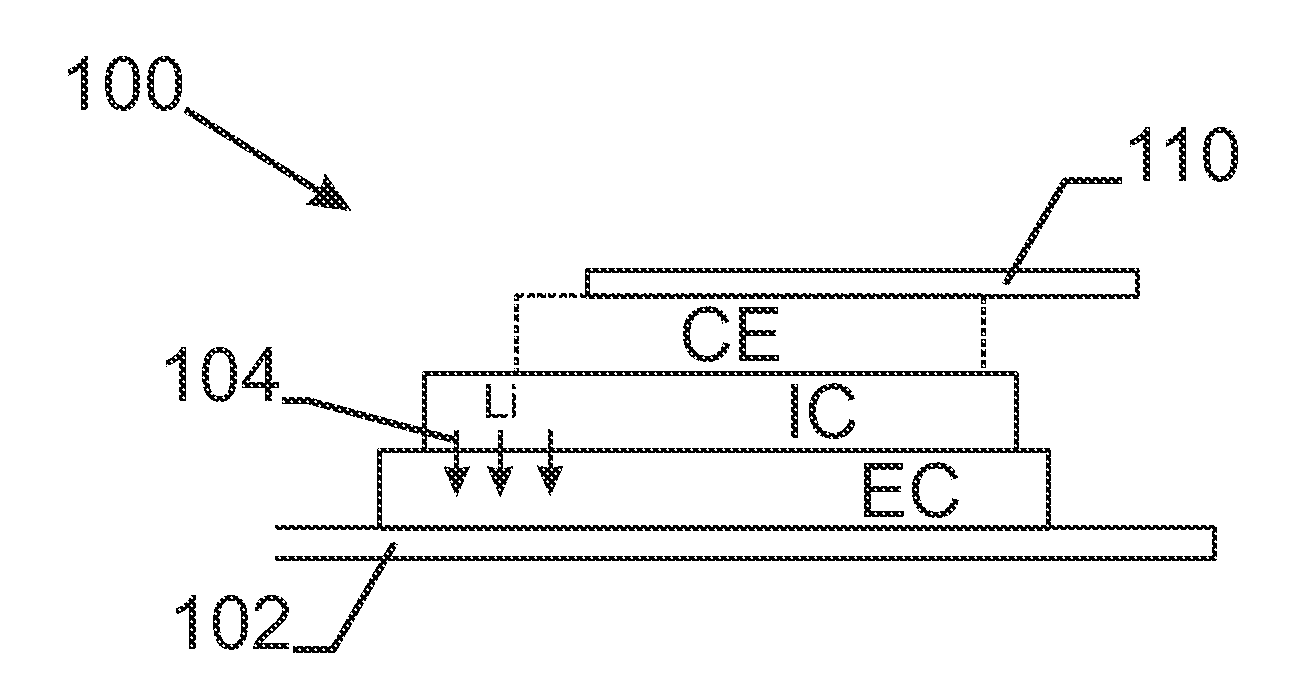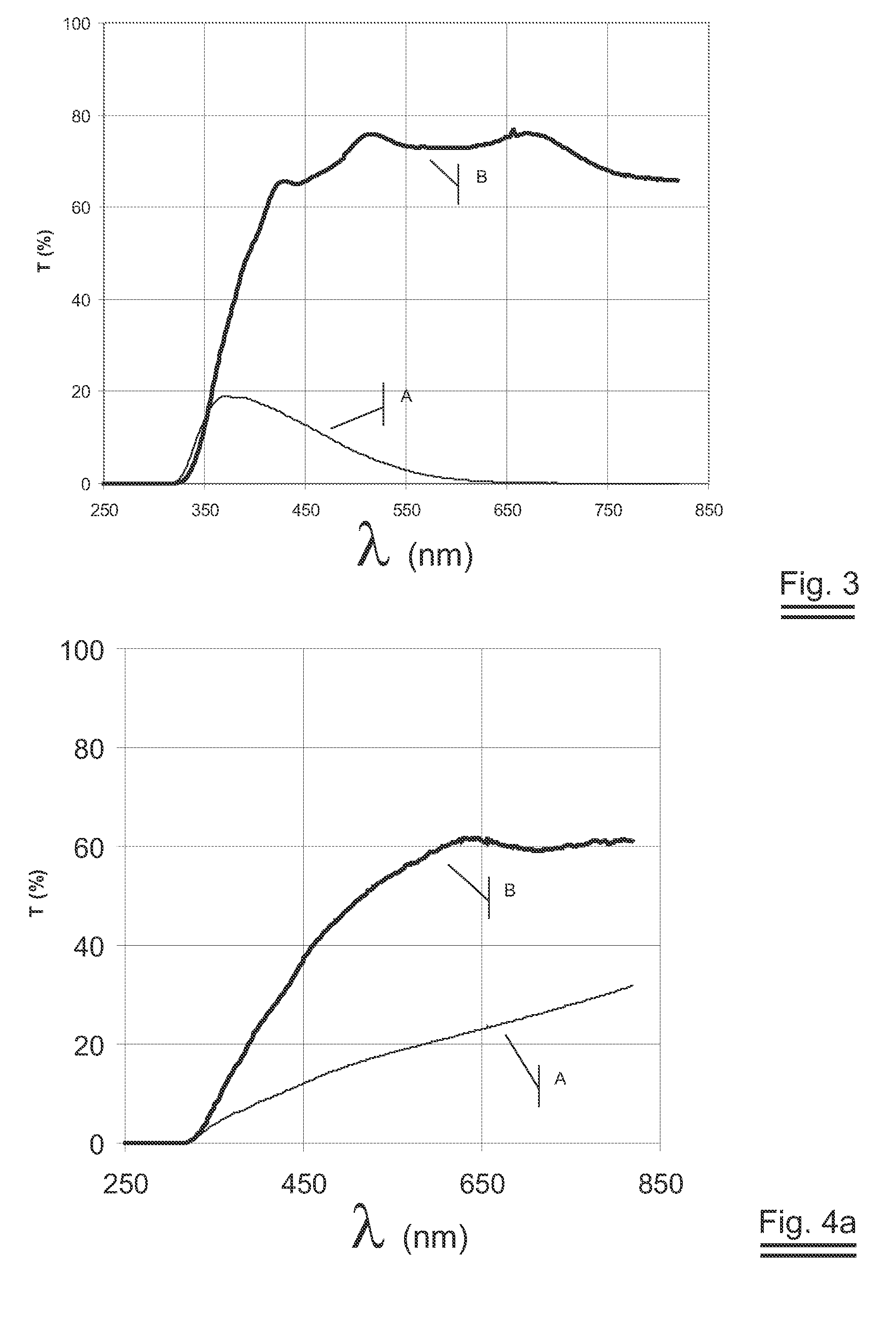Method of making an ion-switching device without a separate lithiation step
- Summary
- Abstract
- Description
- Claims
- Application Information
AI Technical Summary
Benefits of technology
Problems solved by technology
Method used
Image
Examples
Embodiment Construction
.
[0046]FIG. 3 shows the transmission results obtained on a second preferred embodiment EXAMPLE 2.
[0047]FIG. 4a shows the transmission results obtained on a third preferred embodiment EXAMPLE 3.
[0048]FIG. 4b shows the amount of lithium absorbed as function of the thickness on EXAMPLE 3.
[0049]FIG. 5 shows the in-situ monitored transmission of a fifth preferred embodiment EXAMPLE 5.
DESCRIPTION OF THE PREFERRED EMBODIMENTS OF THE INVENTION
[0050]FIG. 1 describes a stack of a lithium ion switching device 100 in its most general form. There is the first electric contact 102 whereon an electrode EC is deposited. In the case of an electrochromic device, this electrode EC changes optical properties upon intercalation—shown with arrows 104—or de-intercalation of lithium. In the case of a battery, the electrode EC acts as a reservoir for Li having its lowest energy content when lithium is intercalated into the network. On top of the electrode EC, an ion conductor IC is sputtered. The ion conduc...
PUM
| Property | Measurement | Unit |
|---|---|---|
| electro conductive | aaaaa | aaaaa |
| degree of optical transparency | aaaaa | aaaaa |
| reflectivity | aaaaa | aaaaa |
Abstract
Description
Claims
Application Information
 Login to View More
Login to View More - R&D
- Intellectual Property
- Life Sciences
- Materials
- Tech Scout
- Unparalleled Data Quality
- Higher Quality Content
- 60% Fewer Hallucinations
Browse by: Latest US Patents, China's latest patents, Technical Efficacy Thesaurus, Application Domain, Technology Topic, Popular Technical Reports.
© 2025 PatSnap. All rights reserved.Legal|Privacy policy|Modern Slavery Act Transparency Statement|Sitemap|About US| Contact US: help@patsnap.com



